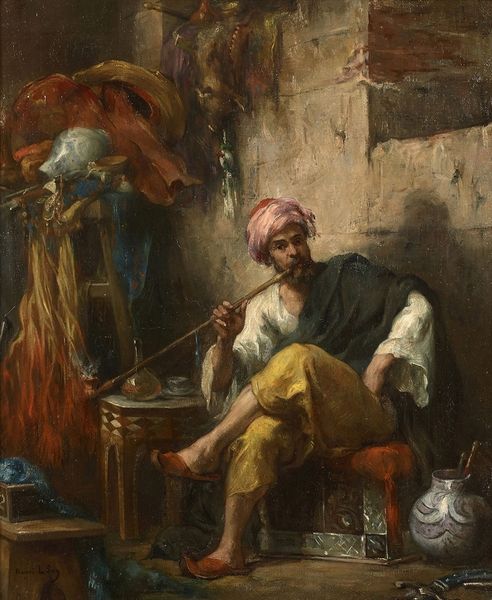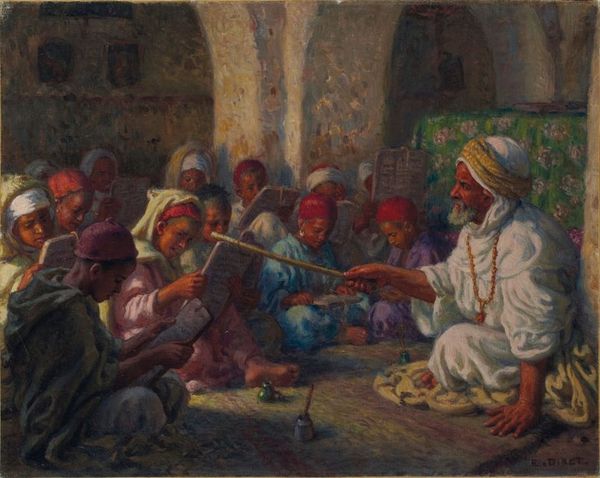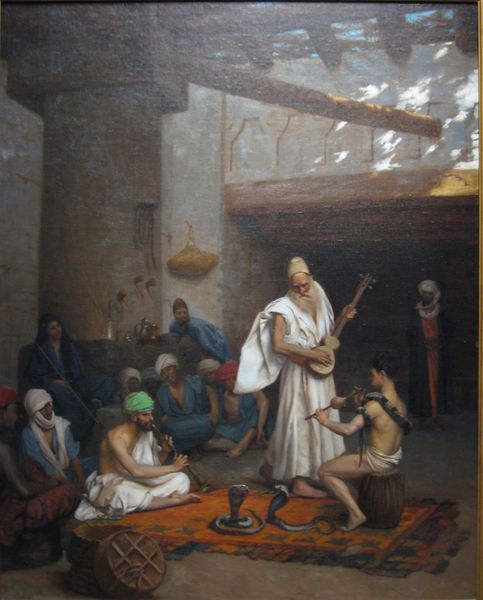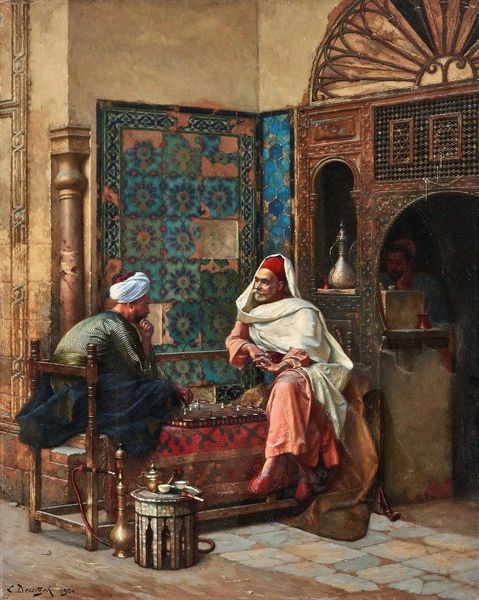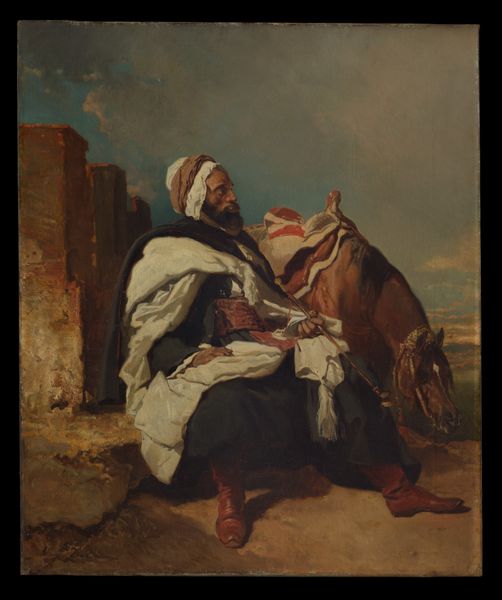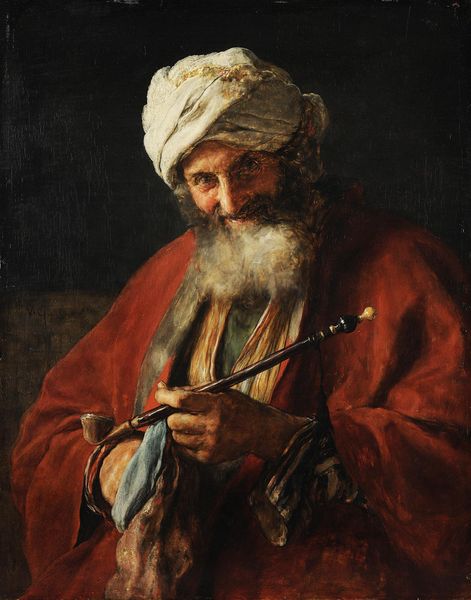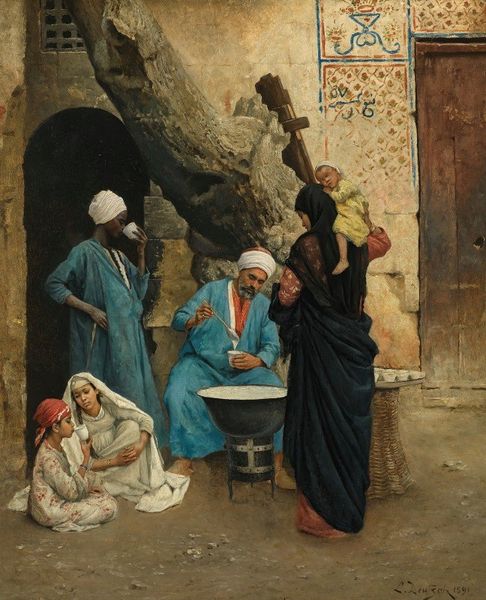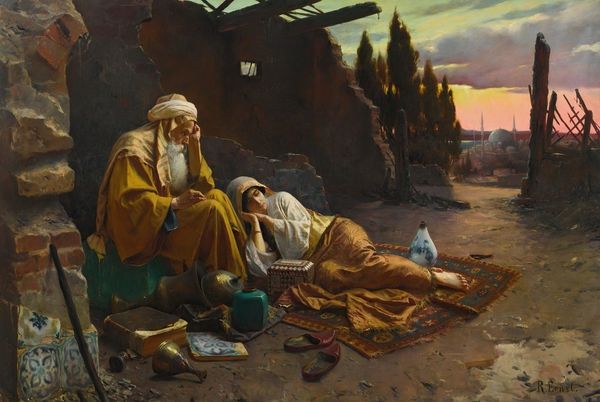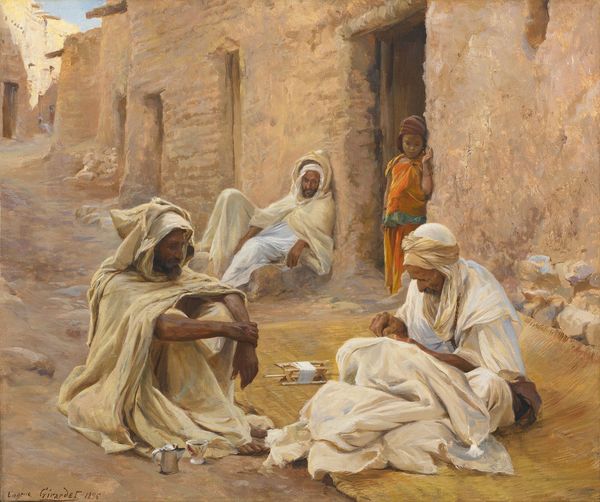
painting, oil-paint
#
portrait
#
painting
#
oil-paint
#
figuration
#
underpainting
#
orientalism
#
genre-painting
#
academic-art
#
realism
Copyright: Public domain
Curator: Charles Sprague Pearce painted "The Arab Jeweller" in 1882, and we’re viewing it now here at the Met. What's your immediate take? Editor: Gritty, focused. There's something quite arresting in the close observation of manual labor—the textures of the clothing, the grime on his bare feet, the tools of his trade scattered about. Curator: The scene and details certainly pull us in, don't they? The artist meticulously captures a sense of the "Orient" which would have been fashionable at the time, but I see symbolic layering too. The jeweller, absorbed, transforms base metal into objects of beauty, a kind of alchemical act. Editor: I'm interested in the actual labour – you see the hand-crafting central to artistic value systems in the 19th century, at the same time, "Orientalism" was being deployed. Look at the man’s clothing, seemingly ordinary and working class, yet still costuming this man and staging labor itself for display and consumption. Curator: Yes, that staging raises key questions. While on one hand, Pearce presents an apparently realistic depiction, on the other he perpetuates a romanticized vision of the East, fitting into European cultural expectations and reinforcing a sense of "otherness". The glowing embers and detailed jewels aren’t accidental; they beckon and signify the lure of the exotic. Editor: I see the seductive power in that glow. But thinking of Pearce’s materials, those are real pigments, applied in a deliberate process. The smooth finish is quite different from Impressionist broken brushwork; it's polished, made for the market and designed to make the scene appear believable, objective. Curator: A fascinating tension. The painting oscillates between objective realism and an almost theatrical construction of the East. Note the man's steady gaze—a complex expression indicating focus and, maybe, a little resignation. Is he simply doing his job, or embodying a constructed identity? Editor: And that duality plays out materially—mass culture consuming what’s supposed to be rare. A studio vision brought to life through specific economic conditions. Curator: A potent observation on both craft and cultural construction. Thanks for guiding us through its complexities! Editor: My pleasure; food for thought about the hands that make, and the world that consumes.
Comments
No comments
Be the first to comment and join the conversation on the ultimate creative platform.


